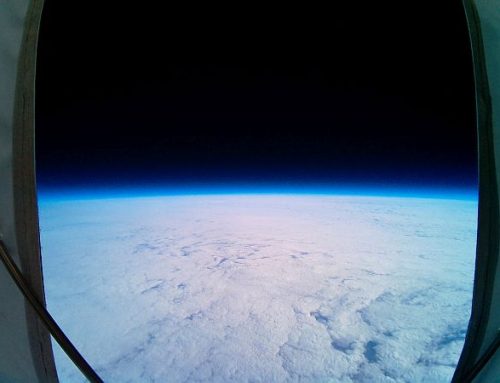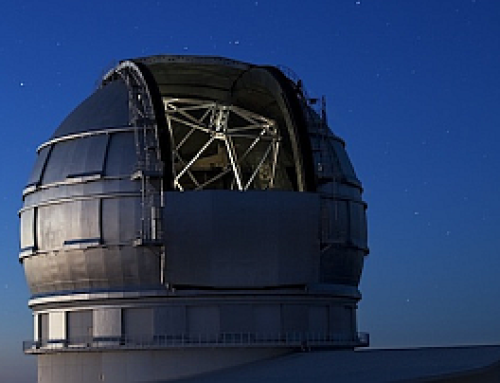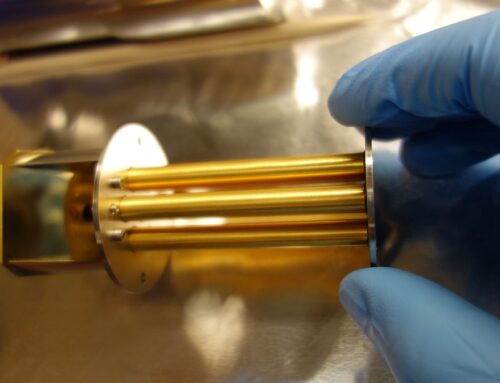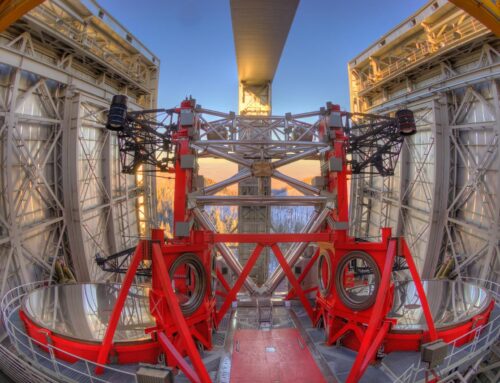Overview
The team for the Mid-IR Spectrometer and Imager (MIRSI) relied on the expertise of IRLabs to replace the original liquid cryogen dewar with a cryo-free refrigerator – without impacting the camera head or system envelope.
In 2000, IRLabs worked with a research team led by Principal Investigator Lynne Deutsch (Boston University) to design and build MIRSI and cooling systems for the Infrared Telescope Facility (IRTF), one of the telescopes at Hawaii’s Mauna Kea Observatories. The IRTF is a 3-meter telescope optimized for infrared observations. We delivered MIRSI in 2000 with first light in 2002. The instrument performs imaging and low-resolution spectroscopy in the 8-14μm and 17-26μm region and used liquid nitrogen (LN2) and liquid helium (LHe) to cool the optics and the silicon arsenide (Si:As) Impurity-Band Conduction (IBC) detector array.
About 15 years later, a Near-Earth Object research group led by David Trilling (Northern Arizona University) and Joseph Hora (Center for Astrophysics) proposed to conduct NEO observations using the IRTF. This research required upgrades to MIRSI including replacing the liquid cryogens with a closed cycle cooler because LHe was expensive and too labor intensive for NEO observation requirements. The NEO research group asked us to look at options.
Key Facts
Project: Retrofit Cooling Platform for MIRSI
Client: NASA; NEO Research Group
Project Location: United States
Application: Astronomy
IRLabs Product: Customized closed cycle GM Refrigerator
Challenges
The driving factors to retrofit MIRSI with a closed cycle cooler were the cost and availability of LHe in Hawaii. Many other telescopes at Mauna Kea had converted to closed cycle cooling that does not require liquid cryogens. This retrofit generated specific challenges:
- No modification to the camera head or envelope. To reduce costs, NASA wanted to maintain the existing camera head and its integration with the telescope. The new closed cycle cooler needed to operate within the existing space and orientation.
- Maintain specified <10 K operating temperature of the Si:As detector array.
- Preserve array stability by minimizing vibration from the new cold head throughout the complex thermal paths
- Electrically isolate the detector mount to reduce noise while still maintaining strong thermal contact needed to reach <10 K operating temperature.
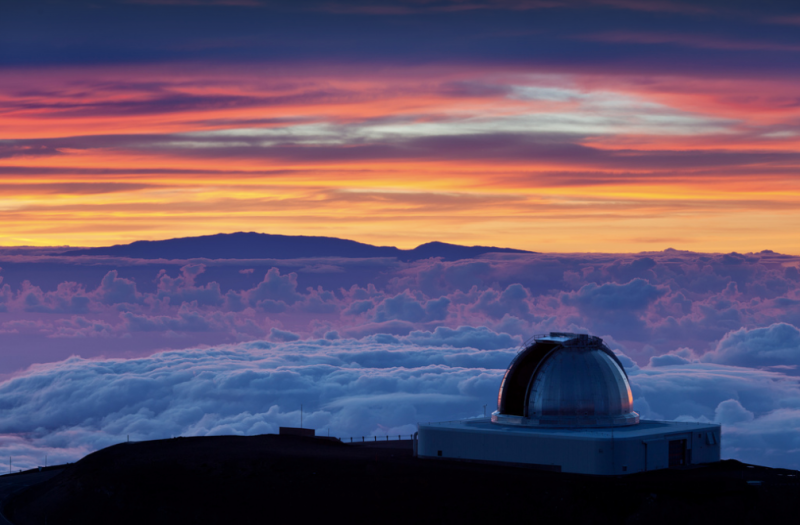
The Mauna Kea Observatories are a collaboration of independent institutions with telescopes located on Mauna Kea on the island of Hawaii. The IRTF (above) is operated by NASA for the University of Hawai`i Institute for Astronomy.
Solutions
2-Stage GM Refrigerator Replaces LN2/LHe Dewar
We proposed a two-stage Gifford-McMahon (GM) Refrigerator which provides continuous uninterrupted operation as low as -3 K. After an accepted design study, IRTF staff dismantled and shipped the camera and cooling system to our facilities to replace the LHe/LN2 dewar with the new GM Refrigerator.
<10 K Temperature Requirement within the Same Envelope Demands Creativity
The new GM Refrigerator is larger than the existing cryogen cooler. To maintain the existing envelope, we engineered the cooling system with the cold head on its side instead of the traditional configuration of being in line with the cold plate. This configuration increased the distance from cold plate to the detector array, requiring a custom design to create separate mechanical paths to successfully meet temperatures of 55 K for stage 1 and 10 K for stage 2. The warmer temperature stage 1 was engineered to completely enclose the colder stage 2 for the entire path without touching it. Overcoming thermal resistance was achieved by an innovative path design to minimize distance and using copper to optimize thermal conductivity.
Vibration Reduction for Complex Thermal Paths
GM Refrigerators typically transmit significant vibration to the cold work surface (on the order of 10-20 μm). We design our GM systems with bellows interfaces and other vibration dampening components at any place where heat is transferred from rigid components. For this project, we designed custom thermal straps using braided copper to maintain the complex thermal path and system orientation.
Electrically Isolated Detector without Compromising Thermal Conductivity
Meeting thermal performance was complicated by the need to electrically isolate the detector mount to eliminate any noise from grounding, voltage or other sources. Electrically isolating a component also thermally isolates it. To electrically isolate the detector without compromising thermal performance, we designed a thin diamond insulator near the detector array which was enough to not break the thermal path.
For this project and many others, NASA and other clients in the scientific community rely on us to work collaboratively and solve these complex design challenges.
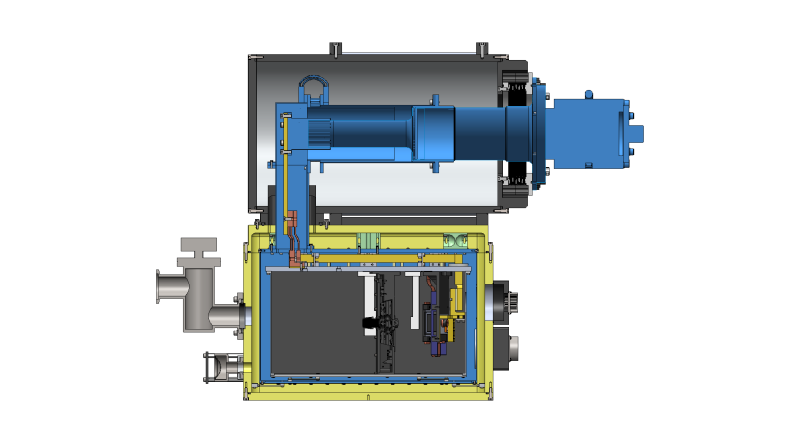
Design of cold head and stage 1 (55 K) path (shaded in blue).
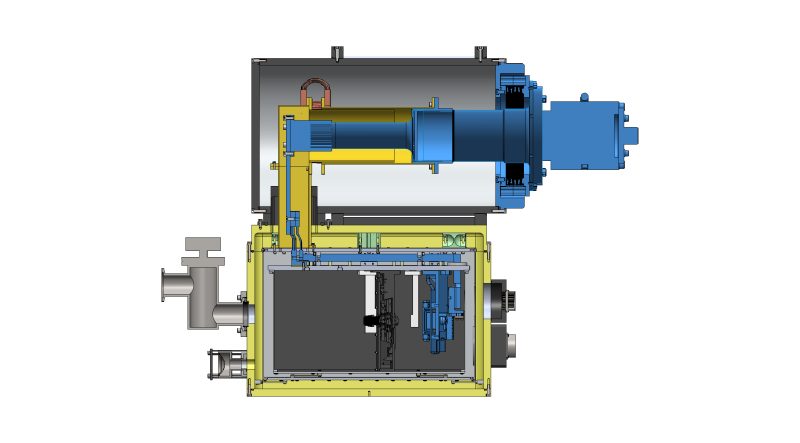
View of cold head and stage 2 (10 K) path (shaded in blue) which is entirely enclosed within the stage 1 path.
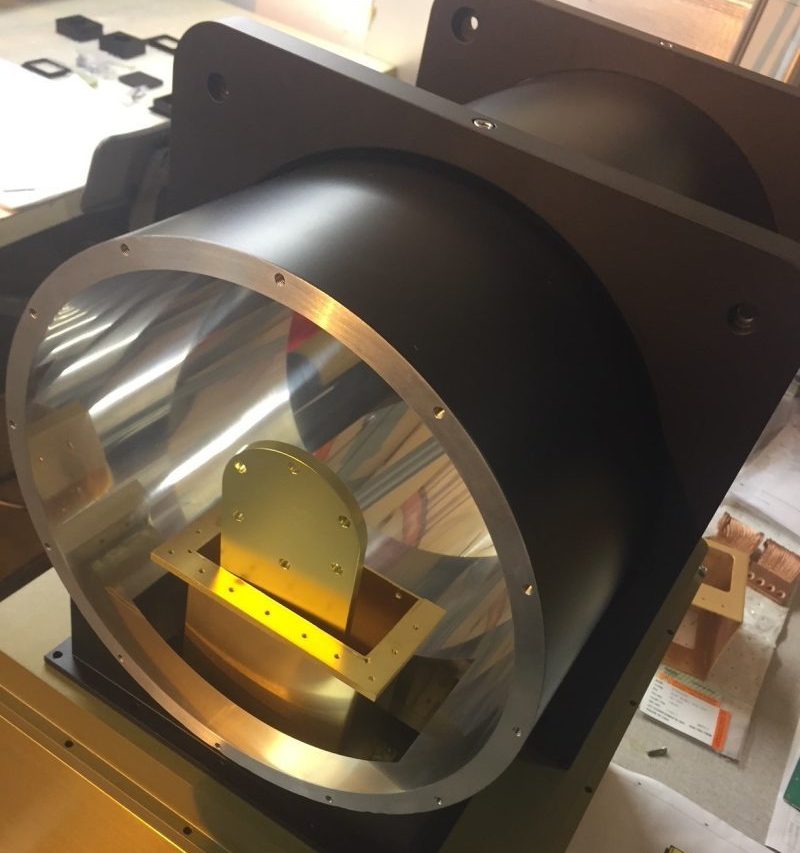
Nested cold fingers transfer heat from the cold head to cold plates. The inside cold finger (tombstone shape) is the 10 K stage and the rectangular cold finger is the 55 K stage. These thermal paths cannot touch each other.
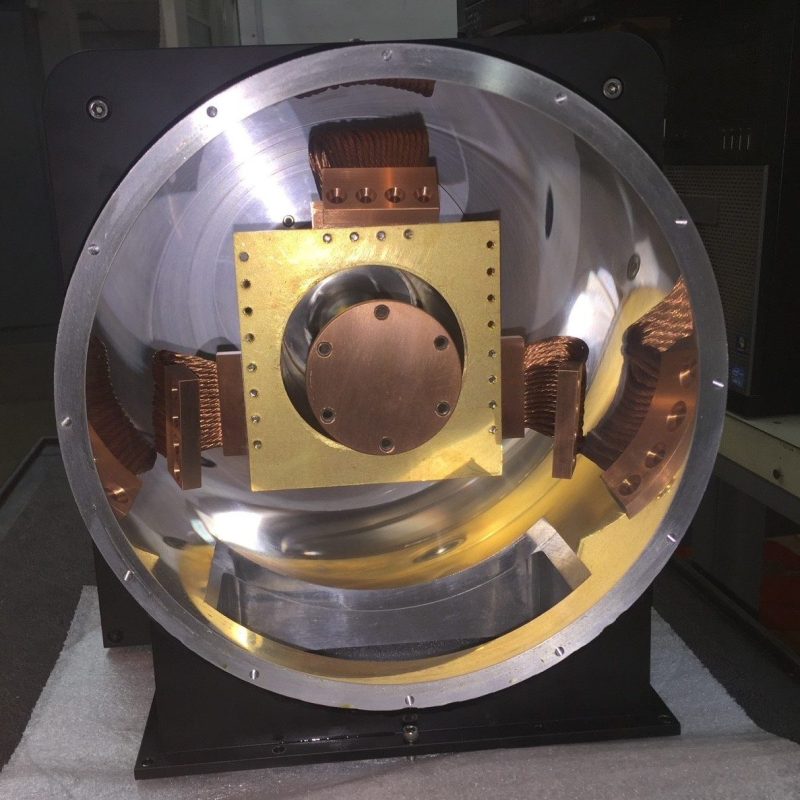
Custom thermal straps using braided copper maintain the complex thermal path and system orientation.
Dichroic Beam Splitter Added to the Camera
In addition to converting the cooling platform from liquid cryogen to closed cycle, the MIRSI team requested that the original IR camera be modified to add a dichroic beam splitter. The IR radiation used for imaging and spectroscopy is reflected into the main optics chamber, and the visible light passes through the dichroic and exits through a dewar window where it enters the guide camera system. The dichroic mirror required advanced cooling design to operate within temperature specifications. The support blocks for the mechanical components inside the camera case also required engineering expertise and finite element analysis (FEA) to ensure rigidity and integrity with varying weight loads during the telescope’s motion in all directions.
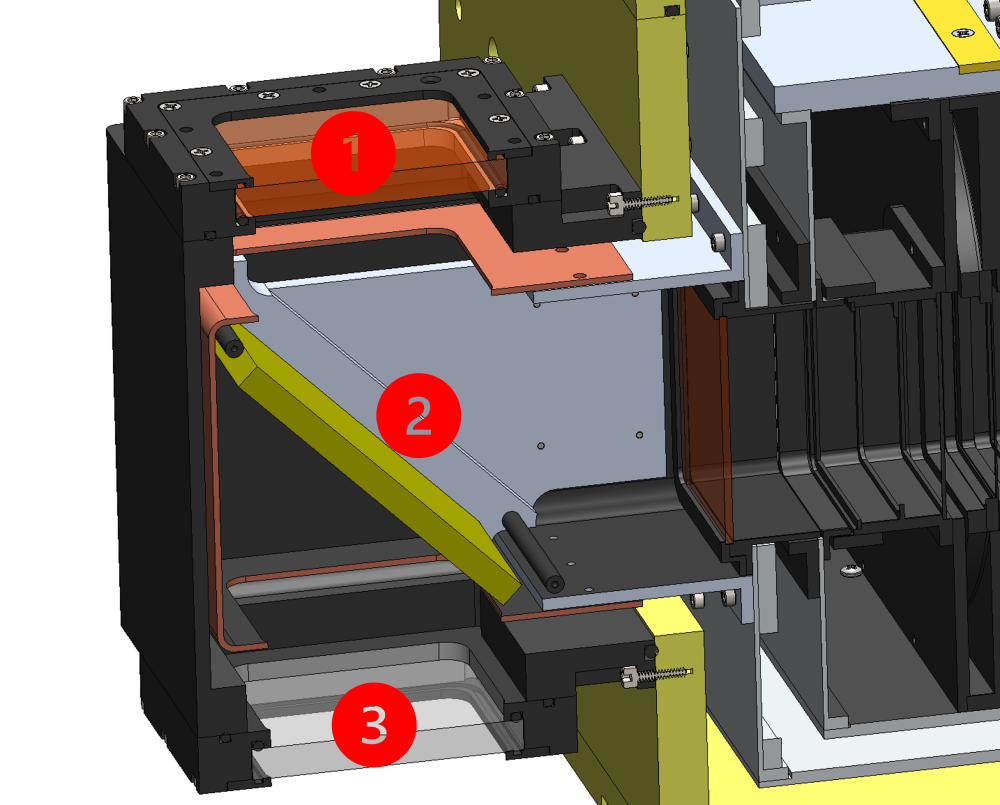
All radiation enters the dichroic beam splitter extension through the dewar window (1). IR radiation is reflected by the dichroic mirror to the spectrometer (2). Visible light passes through the dichroic and out of the dewar through a second window for use by other imaging cameras (3).
Acknowledgements & References:
- MIRSI and MIRSI Upgrade funding sources include Boston University, NSF Division of Astronomical Sciences Grant 9876656MI, NASA Grant NNX15AF81G, and IRTF.
- “The (new) Mid-Infrared Spectrometer and Imager (MIRSI) for the NASA Infrared Telescope Facility”, Hora, J. L., Trilling, D., Mommert, M., Smith, H. A., Moskovitz, N., Marscher, A. P., Tokunaga, A., Bergknut, L., Bonnet, M., Bus, S. J., Connelly, M., Rayner, J., and Watanabe, D. 2015, DPS, 47, 312.21
- More about IRTF and MIRSI

